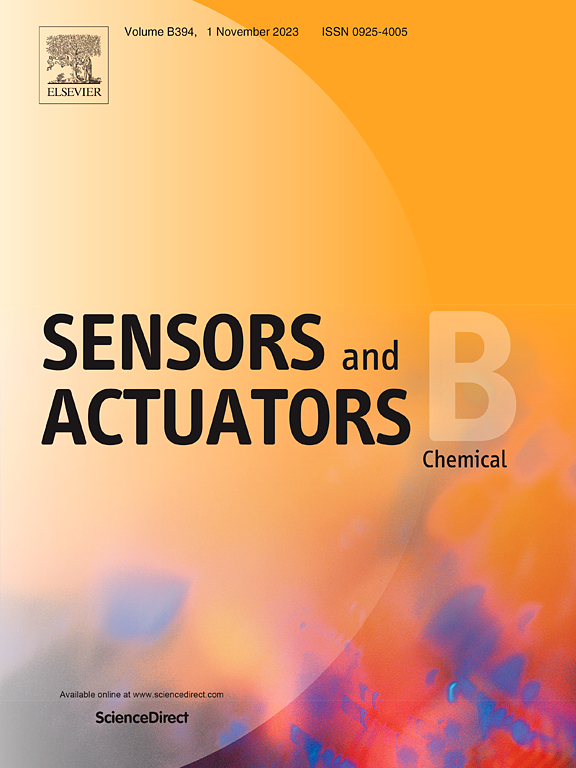TA-TaTe2@lysozyme-based smartphone-integrated lateral flow biosensor for colorimetric and photothermal dual-mode bacterial label-free detection
IF 3.7
1区 化学
Q1 CHEMISTRY, ANALYTICAL
引用次数: 0
Abstract
Lateral flow biosensors (LFBs) have long been used for rapid detection of various biological targets, including bacteria. However, antibody sandwich-based colorimetric LFBs often face limitations due to low sensitivity of quantitative analysis and complicated antibody labeling, which hampers their widespread adoption for point-of-care testing (POCT) of bacteria. To address these challenges, we prepared TA-TaTe2@lysozyme nanocomposites based on TaTe2 nanosheets and developed a colorimetric/photothermal dual-mode LFB for sensitive, portable, and label-free detection of S. aureus. Due to the high optical absorption and photothermal conversion efficiency of TA-TaTe2@lysozyme, the photothermal detection limit of the LFB is 93 CFU mL−1, which is 68 times more sensitive than colorimetric detection. Based on the bacterial capture ability of TA-TaTe2@lysozyme, we proposed a label-free detection strategy that does not require antibody labeling to simplify the process and reduce costs. Moreover, the smartphone-integrated LFB enables portable result readout and analysis in both colorimetric and photothermal dual modes, improving detection accuracy. This promising bacterial POCT method may facilitate food safety and healthcare monitoring.

TA-TaTe2@lysozyme-based智能手机集成横向流动生物传感器,用于比色和光热双模式细菌无标签检测
横向流动生物传感器(LFBs)长期以来一直用于快速检测各种生物靶标,包括细菌。然而,基于抗体三明治的比色lfb往往面临定量分析灵敏度低和抗体标记复杂的局限性,这阻碍了其在细菌点护理检测(POCT)中的广泛应用。为了解决这些问题,我们制备了基于TaTe2纳米片的TA-TaTe2@lysozyme纳米复合材料,并开发了一种比色/光热双模LFB,用于灵敏、便携和无标签的金黄色葡萄球菌检测。由于TA-TaTe2@lysozyme具有较高的光吸收和光热转换效率,LFB的光热检测限为93 CFU mL−1,灵敏度是比色法检测的68倍。基于TA-TaTe2@lysozyme的细菌捕获能力,我们提出了一种不需要抗体标记的无标签检测策略,以简化过程并降低成本。此外,集成智能手机的LFB能够在比色和光热双模式下进行便携式结果读取和分析,从而提高检测精度。这种细菌POCT方法有望为食品安全和保健监测提供便利。
本文章由计算机程序翻译,如有差异,请以英文原文为准。
求助全文
约1分钟内获得全文
求助全文
来源期刊

Sensors and Actuators B: Chemical
工程技术-电化学
CiteScore
14.60
自引率
11.90%
发文量
1776
审稿时长
3.2 months
期刊介绍:
Sensors & Actuators, B: Chemical is an international journal focused on the research and development of chemical transducers. It covers chemical sensors and biosensors, chemical actuators, and analytical microsystems. The journal is interdisciplinary, aiming to publish original works showcasing substantial advancements beyond the current state of the art in these fields, with practical applicability to solving meaningful analytical problems. Review articles are accepted by invitation from an Editor of the journal.
 求助内容:
求助内容: 应助结果提醒方式:
应助结果提醒方式:


